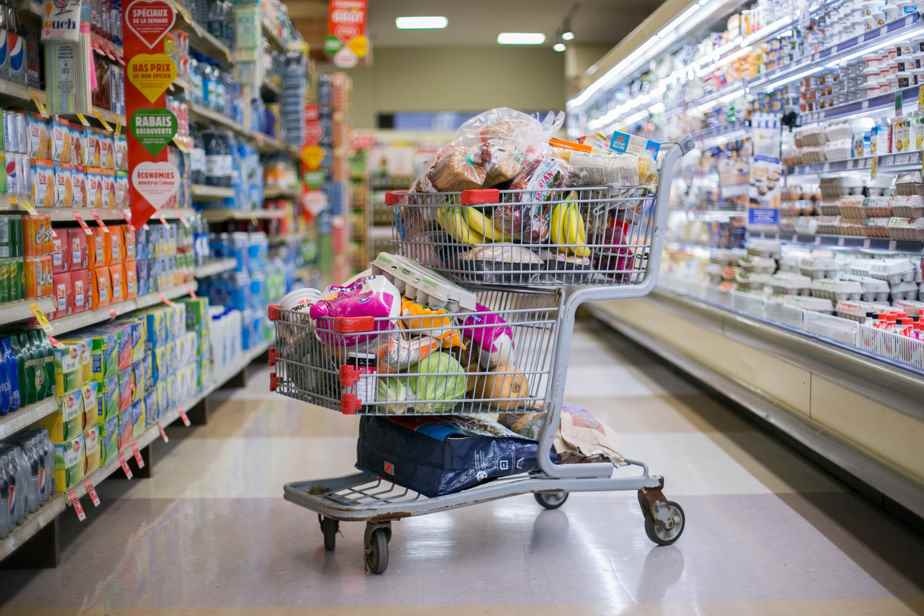In Quebec, more and more people are skipping a meal or barely eating, for lack of means to afford foods whose prices are constantly rising. Some go to the food bank for the first time. Even Fondation Olo, which supports pregnant women and families with young children, is seeing requests for help increase.
“Everything is in place for the worsening of food insecurity for two years and that’s what the statistics indicate,” confirms François Fournier, of the Quebec Observatory of Inequalities. The researcher talks about the pandemic, the housing crisis, inflation and rising food prices.
Someone experiences mild food insecurity when they worry about not being able to pay for groceries. People who were in this condition see their situation deteriorate towards moderate or severe insecurity, which means that the quantity and quality of their food are compromised. They may have to skip meals and live with hunger.
According to figures from the National Institute of Public Health of Quebec, from May 2020 to September 2022, the share of the population suffering from moderate or severe food insecurity increased from 8% to 15%.
As other expenses are also under pressure at the moment, particularly the incompressible budget devoted to housing, many people are turning to community resources to obtain food.
At Fondation Olo, the rise in food prices has several effects. First, there is an increase in demand for vouchers to help families struggling to buy essential foods during pregnancy and the first two years of a child’s life. In quantity, there was a 32% increase in demand for eggs, 20% for milk and 27% for frozen vegetables. Then, the rise in the price of food directly affects the Foundation, which has to pay more for the purchase.
Unsurprisingly, collective kitchens are also more in demand. And participants have to do complex accounting exercises to be able to cook meals within the budget allocated for ingredients.
“Inflation causes groups to modify their purchases,” explains Josée di Tomasso, spokesperson for the Regroupement des cuisines collectives du Québec.
“Chicken has become extremely rare,” she says. And these are forced dietary changes. »
Josée di Tomasso explains that, although beneficial in many ways, veganism tastes different when imposed, even with the best of recipes.
Even the workers
At the Bol du Carrefour solidaire, in Montreal, we note the diversification of the clientele. Workers and students are knocking on the door more often.
Many workers tell us that they can no longer make ends meet. Before, they were able to buy their groceries with the discounts, but now they have to cut back and no longer buy meat or butter.
Sylvie Chamberland, co-director general of the organization Au Bol du Carrefour solidaire
We’ve been saying it for years, but the pandemic coupled with inflation has inflated this group of vulnerable people: more and more working people are turning to community support services.
About one person in two who suffers from food insecurity has employment income, explains researcher François Fournier, who specifies, however, that employees live more with mild than severe food insecurity.
“The job market has changed a lot over the past 20 years,” he says. Many employees have precarious conditions. Working poor exist. »
Often hidden
Concretely, this means that if your co-worker doesn’t take a lunch break, it may be that he doesn’t have the time, but maybe he also doesn’t have the means.
Because, explains François Fournier, despite the current socio-economic conditions and the fact that we talk a lot about it, a stigma persists around food insecurity, which makes the subject difficult to discuss with loved ones.
This taboo can foster isolation.
For a family just arriving, hosting is complicated. Celebrating a child is not easy in a context of food insecurity. There are real impacts on mental health.
François Fournier, researcher at the Quebec Observatory of Inequalities
For people struggling to make ends meet, community kitchens are a great tool because they are very inclusive.
“We are starting to see kitchens in the evenings and on weekends, to be able to accommodate people who work,” explains Josée di Tomasso.
Learn more
-
- 20%
- Increase in monthly food aid requests in one year.
HungerCount 2022Food Banks of Quebec
- 671,000
- Number of people helped each month by food banks. The third are children.
HungerCount 2022Food Banks of Quebec

